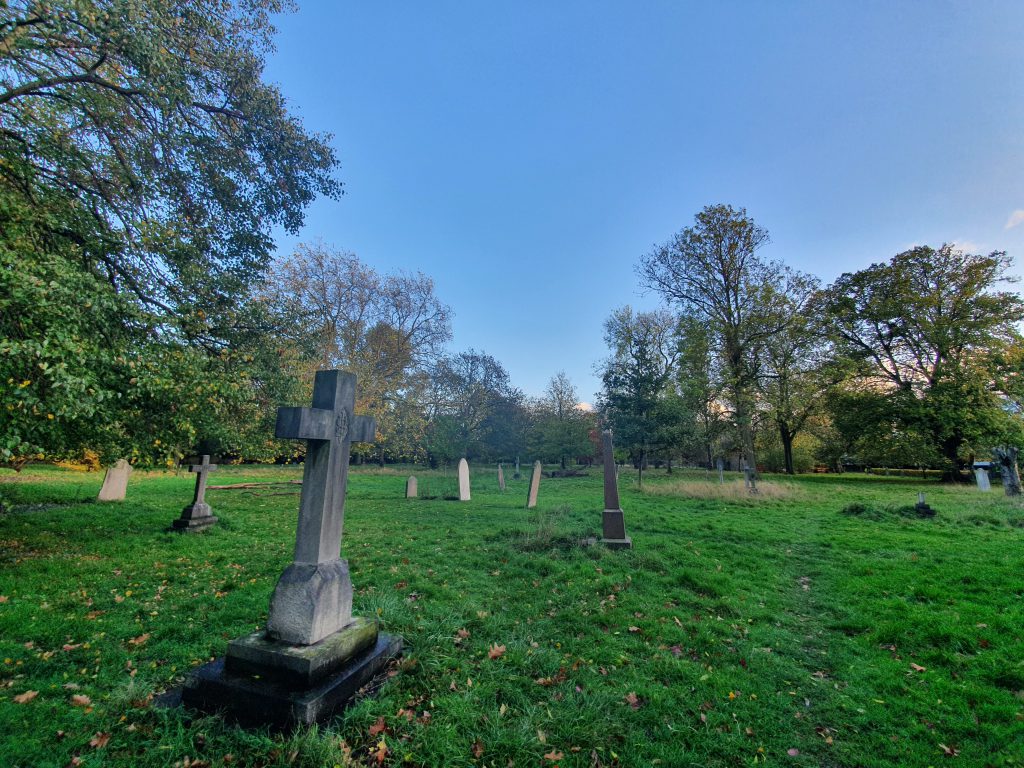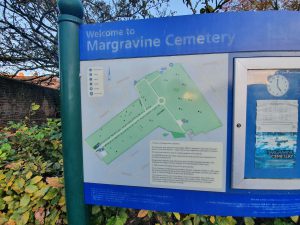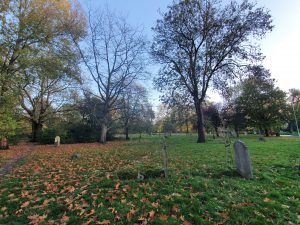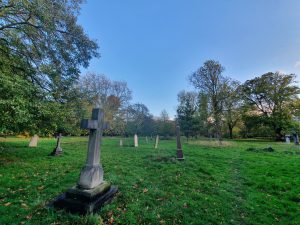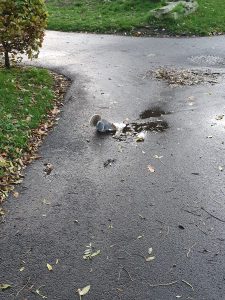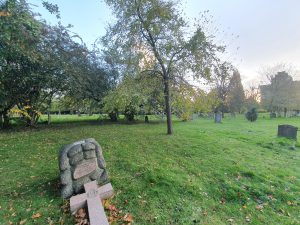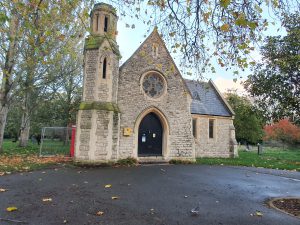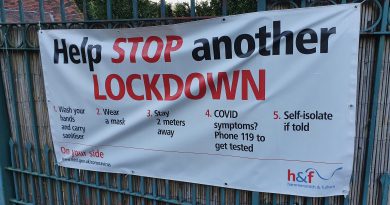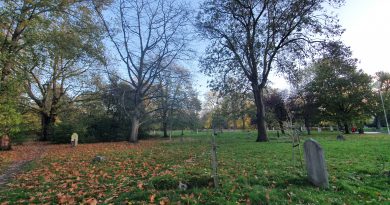London – Hammersmith and Fulham (Borough of) – Margravine Cemetery
This London cemetery was laid out in 1868, designed to relieve pressure on churchyards in the area, and the first burial took place here on 3 November 1869. It has also been known as Hammersmith Cemetery and there was an area for Church of England burials and another area for non-conformists.
Burials continued here until 1951 and at this point the site was taken over by the council who termed it as a ‘garden of rest’. What this really meant is that the council took down a large number of gravestones and buried them, leaving what I think looks like a slightly disjointed and confused cemetery, albeit it in beautiful surroundings.
The friends of the cemetery seem quite active and their web-site has an interesting take on the history of the site. They mention how sluggish the borough were in opening their burial ground, but an outbreak of cholera in the area speeded things up somewhat. The friends also note that the cemetery saw:
“A superintendent’s drunken foul mouthed wife upsetting visitors and creating “a crowd” on Christmas Day 1879, belligerent gravediggers demanding higher wages and having fist-fights in the tool house, the nonconformists’ objections, the battle with Sir William Palliser and a fair amount of wheeling and dealing when acquiring or exchanging land”.
Although I didn’t find his grave, George Wimpey of construction fame is buried at the cemetery. There are 83,000 burials at the site, although when it opened the cemetery was only designed to hold 12,000.
This squirrel followed me for quite some time, but annoyingly was unwilling to pose for photos.
There were a large number of dog walkers using the cemetery when I was there, but there’s plenty of space and it looked generally well cared for. Well, other than for the empty beer cans dotted about the site.
The cemetery’s chapel, which was designed by the local architect George Saunders, who was also responsible for pretty much everything at the site. There was a second chapel at the cemetery, but this was demolished in 1939.
I visited shortly before the cemetery was due to close, so my meandering was limited and I missed the “ghoulish” Victorian reception house. This building, where bodies were laid to rest, has now been listed and is the only one of its kind left in London. I’m not sure why Historic England thought it was ghoulish, it’s a place to store bodies in a cemetery before they were buried, but there we go….

